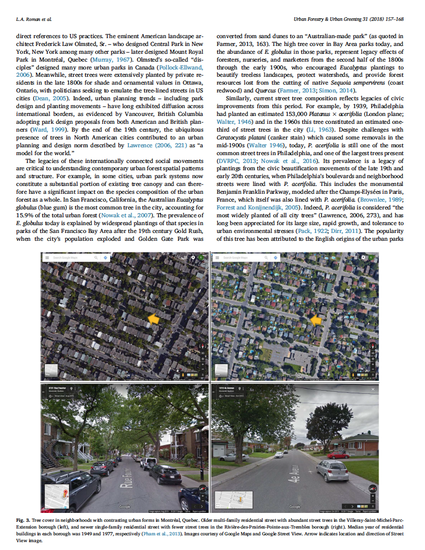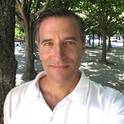
Article
Human and biophysical legacies shape contemporary urban forests: a literature synthesis
Urban Forestry & Urban Greening
(2018)
Abstract
Understanding how urban forests developed their current patterns of tree canopy cover, species composition,
and diversity requires an appreciation of historical legacy effects. However, analyses of current urban forest
characteristics are often limited to contemporary socioeconomic factors, overlooking the role of history. The
institutions, human communities, and biophysical conditions of cities change over time, creating layers of legacies
on the landscape, shifting urban forests through complex interactive processes and feedbacks. Urban
green spaces and planted trees can persist long after their establishment, meaning that today’s mature canopy
reflects conditions and decisions from many years prior. In this synthesis article, we discuss some of the major
historical human and biophysical drivers and associated legacy effects expressed in present urban forest patterns,
highlighting examples in the United States and Canada. The bioregional context – native biome, climate, topography,
initial vegetation, and pre-urbanization land use – represents the initial conditions in which a city
established and grew, and this context influences how legacy effects unfold. Human drivers of legacy effects can
reflect specific historical periods: colonial histories related to the symbolism of certain species, and the urban
parks and civic beautification movements. Other human drivers include phenomena that cut across time periods
such as neighborhood urban form and socioeconomic change. Biophysical legacy effects include the consequences
of past disturbances such as extreme weather events and pest and disease outbreaks. Urban tree
professionals play a major role in many legacy effects by mediating the interactions and feedbacks between
biophysical and human drivers. We emphasize the importance of historical perspectives to understand past drivers that have produced current urban forest patterns, and call for interdisciplinary and mixed methods
research to unpack the mechanisms of long-term urban forest change at intra- and inter-city scales.
Keywords
- Historical ecology Legacy effect Social-ecological system Tree diversity Urban ecology Urban tree canopy
Disciplines
Publication Date
2018
DOI
https://doi.org/10.1016/j.ufug.2018.03.004
Citation Information
Roman, L.A., Pearsall, H., Eisenman, T.S., Conway, T.M.; Fahey, R.T.; Landry, S; et al. (2018). "Human and biophysical legacies shape contemporary urban forests: A literature synthesis." Urban Forestry & Urban Greening (31), 157-168.
Creative Commons license

This work is licensed under a Creative Commons CC_BY International License.
